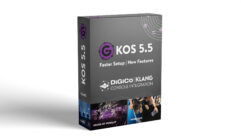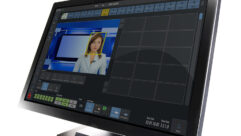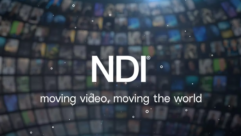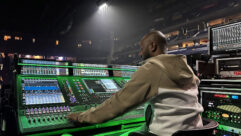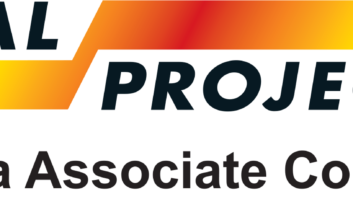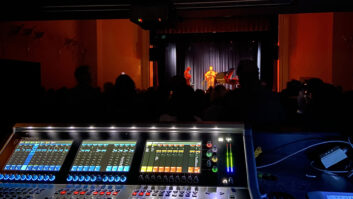Photo above: Vincent Casamatta mixing Maroon 5’s FOH sound on tour on a DiGiCo Quantum5
Three-time Grammy Award winners Maroon 5 took off on a concise but intense tour this year. UK + Europe 2023 was the 15th concert tour by the band, who have also won eight Billboard Music Awards and all 27 of their BMI Pop Awards nominations, in support of their seventh studio album, 2021’s Jordi. The tour began on June 13 in Lisbon, Portugal and traveled through Spain, Italy, Czech Republic, Denmark, Netherlands, Germany, and France before concluding on July 4, 2023, in Birmingham, England. But Maroon 5 also have a completely different live identity: their ongoing residency at the Dolby Live venue at Park MGM in Las Vegas, which they settle back into from July 28 through August 12. On the road, they’re a stereo band; in Las Vegas, they arrive as an immersive experience through Dolby’s Atmos format. What stays consistent throughout is DiGiCo, the suite of audio consoles the band’s mix team deploys to manage every show’s sound.
Specifically, front of house is mixed on a DiGiCo Quantum5 by Vincent Casamatta. Marcus Douglas manages the band’s monitors on a DiGiCo SD5, while Dave Rupsch handles lead singer Adam Levine’s vocals using an SD10. All three consoles, which reside on an Optocore network loop and share two SD-Racks, were supplied by Clair Global.
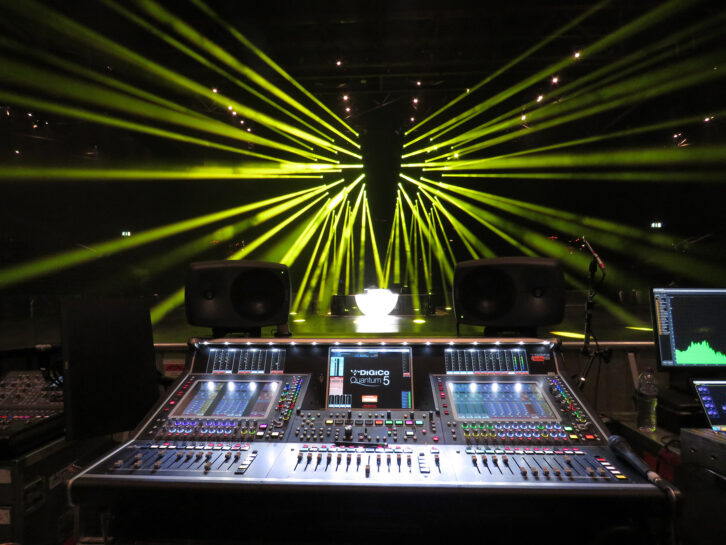
The addition of Dave Rupsch to focus on lead singer Adam Levine’s vocals in mid-2021 was a game changer, says Casamatta. Ironically, adding a console actually reduced the amount of overall gear needed to manage the sound, thanks to the desks’ onboard processing and highly flexible workflow options. “With everything on the loop, we have less gear and it sounds and works better than it ever did,” he says. “It sounds so much better not going through a splitter. The whole package has been really, really solid.”
While the Quantum5 ostensibly mixes the same show regardless of whether it’s Prague or Las Vegas, Casamatta says the shift between stereo on the road and immersive in Las Vegas has subtle but significant distinctions. “I need my stereo show on the DiGiCo to exist at all times behind the immersive mix and vice versa,” he says. “So I’m literally booting up the same show file whether I’m mixing an immersive show or have a stereo two-bus mix happening. It doesn’t matter. And that was a huge mandate of mine because I didn’t want to compromise. No matter what format we were doing I wanted it to be the same mix, and the Quantum5 made that easy.”
To accomplish that, Casamatta taps into the Quantum5’s flexibility by using a combination of subgroups and MADI to assure that each of the audio “objects” used in the Atmos mix retain the same processing used in the stereo mix on the road. “I have a lot of groups anyway in my stereo mix, and I was able to utilize those to create objects out of them,” he explains. “I already have a complete kick bus and a snare bus and a vocal bus, so I can just send those out as objects into the immersive environment.”
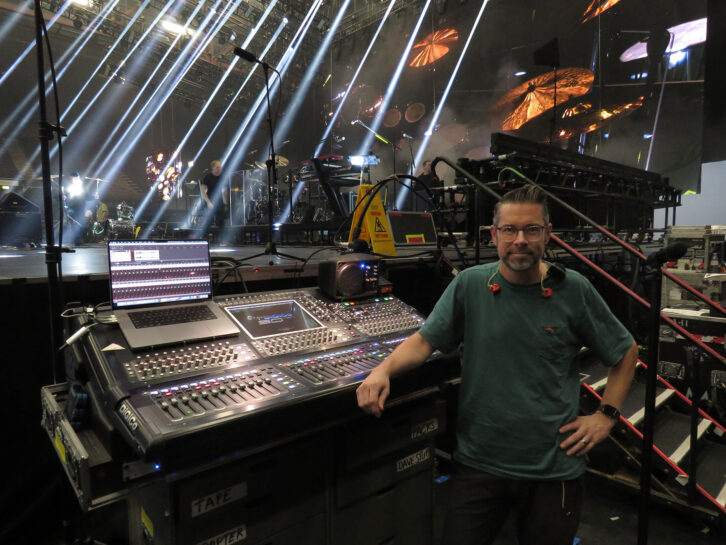
Dave Rupsch might have what looks like a dream gig: running monitors for just the lead vocalist for every show. Actually, he says, the ease with which he does his job is a combination of being naturally “on the same page” with singer Adam Levine and the layout of his DiGiCo SD10 console, which feeds the singer’s JH Audio Roxanne IEMs on a Shure PSM 1000 wireless system, the same units the entire band uses. “The whole workflow is definitely streamlined by all of us being on the same loop,” he says. “Without a splitter, I’m getting Adam’s vocals right from the source, so the sound quality couldn’t be more pristine.”
Rupsch says how he approaches his task doesn’t vary much between on the road and in Las Vegas—where he also mixes three horn players and two backup vocalists—although the latter location can present some challenges. “Adam spends a lot of time on the stage thrust, and it’s not unusual to get some PA bleed into the vocal microphone there,” he explains. “But in Las Vegas, there are three PA hangs that shoot directly onto the thrust, so there are a lot more artifacts, such as differing arrival times, plus there’s slapback from the back wall of what is a smaller venue than most of the shows we’ve been doing.”
To counter that, “Super Dave” Rupsch brings in a Neve 5045 Primary Source Enhancer analog processor through an I/O on the console, which he says substantially softens the artifacts. He combines that with a switch from Levine’s longtime Shure SM58 vocal mic to a newer Shure KSM-11. “That combination of the 5045 and the much tighter mic capsule solves the problem,” he says. “I also like the computer landing pad on the SD10, which is really convenient for dialing in other plug-ins and fine-tuning the filters on noise gates. The console’s got a lot of features, but because everything’s so easy and intuitive to use, I can keep the focus on Adam’s vocals.”
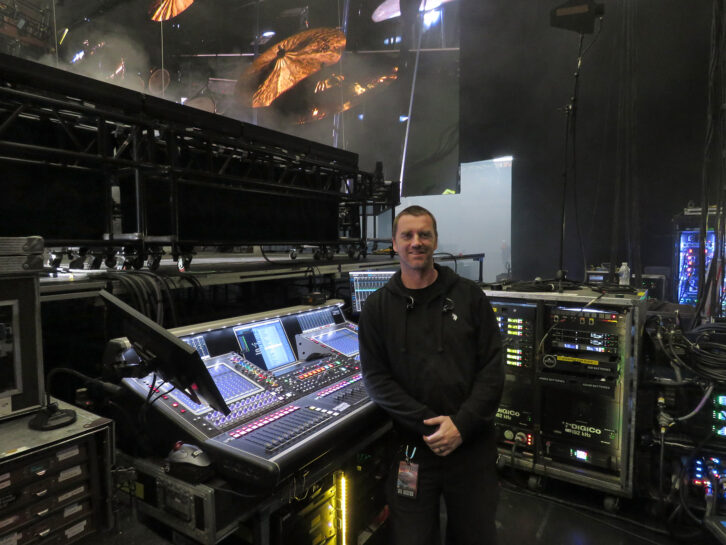
Marcus Douglas has moved up the ranks in the Maroon 5 universe, starting as the monitor tech in 2015 and then becoming the band’s sole monitor engineer in 2019, shortly before Adam Levine’s monitor mixes were separated into their own silo. The SD5 he uses for band monitors was also his first extended experience with DiGiCo desks, and he was glad to have the introduction. “The SD5 sounds great and has a very easy, intuitive workflow,” he says. “I could walk right up to it and get started immediately.”
Douglas likes the fact that everything he needs—from gates to compressors to effects—are onboard and always right at hand for the five band members onstage. “I also like the Con-Send feature that we use on the loop, which integrates the talkback and shout speakers without having to use up any extra channels. It seems like DiGiCo really thought of everything.”
Casamatta echoes that, adding, “DiGiCo did a great job of giving engineers tools to make artistic and aesthetic choices without needing outboard gear. It’s the complete package.”
For more details on Maroon 5’s M5LV residency and touring schedule, visit www.maroon5.com. Clair Global can be found online at www.clairglobal.com.


